The flag of Suriname is a compelling mix of colors and shapes that distill the essence of this South American nation into a single, visually striking emblem.
As a visual narrative, the flag melds the country’s diverse landscape, multicultural background, and ambitions for a better future. It resonates deeply with its citizens while capturing the curiosity of those less familiar with Suriname.
Suriname Flag
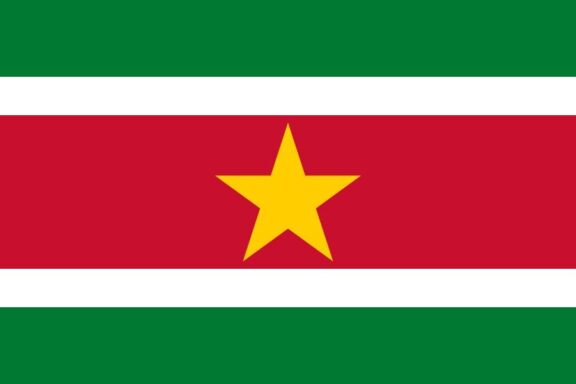
The flag of Suriname features five horizontal stripes and a large, centrally-located yellow star. It was officially adopted on November 25, 1975, coinciding with the country’s independence from the Netherlands.
Created by Jacques Herman Pinas, the flag’s design aims to encapsulate key aspects of Suriname’s individuality. The flag’s structure and elements serve as a visual narrative that speaks to the nation’s unique characteristics and place in the international community.
Suriname Flag: Color Palette
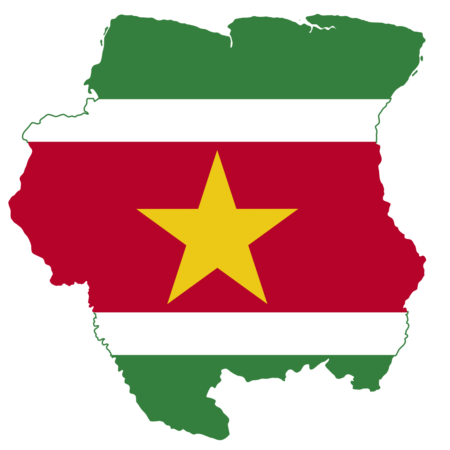
Suriname Flag Emoji: 🇸🇷
The color palette of Suriname’s flag is a thoughtfully selected combination that distinguishes it on the global stage. Comprising shades of green, white, red, and a standout yellow star, these colors prepare the viewer for a deeper dive into their significance.
The hues are not only visually striking but also imbued with meaning that we’ll explore in the following section.
Meaning of Each Color

Green
In the flag of Suriname, the green stripes symbolize the nation’s fertile lands, encompassing the lush rainforests and agricultural areas.
This color not only reflects the abundant natural resources but also encapsulates hope and opportunities for a prosperous Suriname. The verdant hue serves as a reminder of the nation’s ecological richness and potential for growth and renewal.
White
The white stripes on the flag symbolize justice, freedom, and peace. These attributes highlight Suriname’s dedication to fair governance and societal harmony, fostering a climate of trust and neutrality.
The pristine white epitomizes a foundation of fairness upon which the nation strives to build its social and political fabric.
Red
The red band on Suriname’s flag represents progress and love, depicting the nation’s forward-moving spirit and the warm communal bonds that unite society. The vibrant red evokes a sense of vitality and passion, driving the aspiration for advancement and stronger community ties.
Yellow (Star)
The central yellow star shines as a beacon of unity, hope, and a golden future. It reflects the collective aspiration of Suriname’s ethnically diverse populace for a bright and harmonious future, underlining the essence of optimism and enlightenment.
The star’s position at the heart of the flag accentuates these ideals as central to Suriname’s national identity.
Suriname Coat of Arms
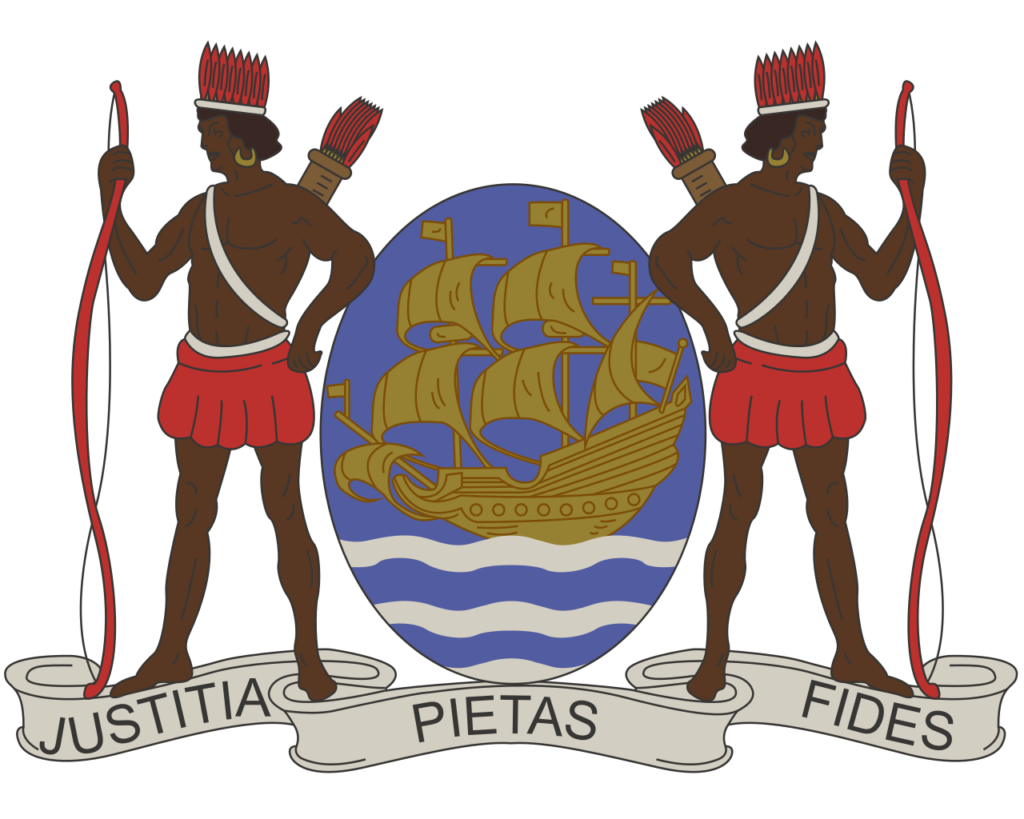
The Suriname Coat of Arms provides a window into the nation’s uniqueness, delving more profound than its flag.
At the center, a shield is split into two parts: the upper section displays a sailing ship, reflecting Suriname’s trade legacy and colonial era, while the lower part exhibits a palm tree alongside a diamond, signifying the nation’s rich natural resources.
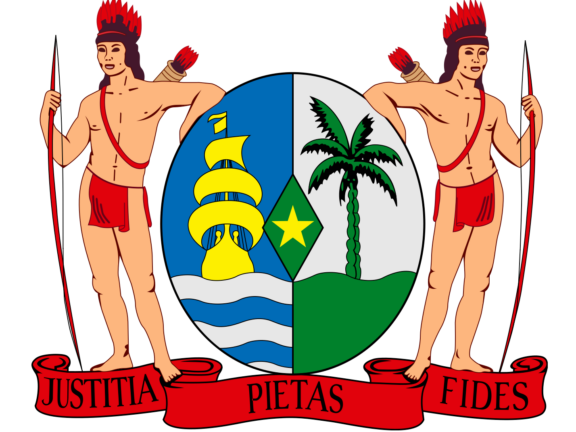
Accompanying the shield are two Amerindians dressed in traditional garb, honoring the indigenous roots of the country. Above, a golden star resonates with the one on the flag, and below the shield, the national motto “Justitia, Pietas, Fides” (Justice, Piety, Fidelity).
Together, these elements portray Suriname’s societal mosaic, ecological riches, and guiding beliefs.
Historical Evolution and the Meaning Behind Changes
Suriname’s flag has undergone significant changes, reflecting shifts in its political landscape and social development. Before its current design, Suriname used the flag of the Netherlands, as it was a Dutch colony until 1975.
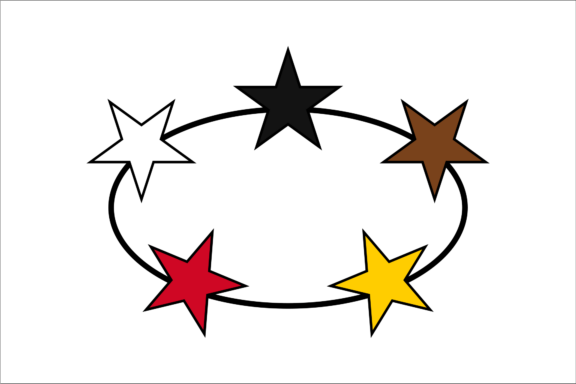
The flag standing today was officially adopted the same day Suriname gained independence. The change was not merely a formal requirement of statehood but a manifestation of a newfound autonomy and the amalgamation of diverse cultures, languages, and religions that make up modern Suriname.
The modern flag’s colors and design elements were chosen carefully to represent a unified national identity that all ethnic and cultural groups within the country could embrace, aiming for a collective future.
Thus, transitioning from using the Dutch flag to adopting a uniquely Surinamese one marks a crucial evolution. It represents not just a change in governance but also a shift from a colonial era to a more inclusive and authentic nation.
Overall Symbolic Meaning of the Flag

The flag of Suriname seamlessly blends various colors and symbols to convey a unified nation. Each element tells its own story, but together, they create a complete narrative that reflects the country’s diversity, natural wealth, and shared values.
Overall, the flag encapsulates the intricate yet harmonious blend of elements that make up Suriname as a nation.
Similar Flags to the Flag of Suriname
The flag of Suriname is distinct in many aspects, but it does share some similarities with other flags due to design elements or color schemes.
Ghana
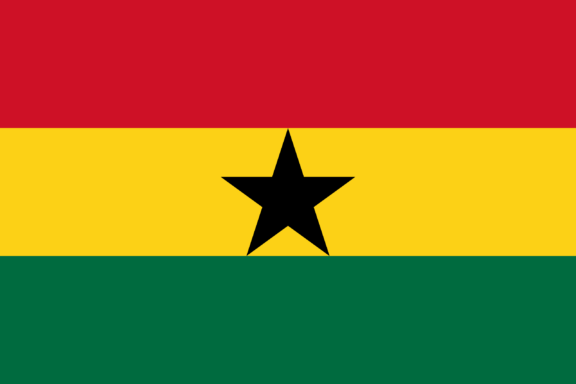
The flag of Ghana features the Pan-African hues of red, yellow, and green in its unique arrangement. These colors serve as a symbol of shared African roots and the quest for liberty, a theme that also echoes in Suriname despite its geographical distance from Africa.
To further distinguish its flag, Ghana incorporates a central black star, representing the enduring struggle for freedom across the African diaspora— a value that holds significance in Suriname’s past as well.
Ethiopia
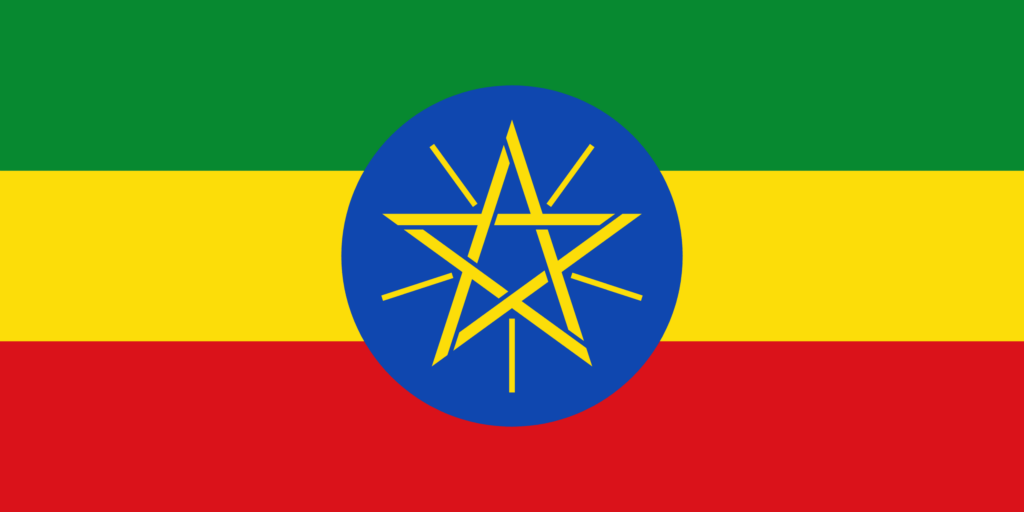
Ethiopia’s flag features horizontal stripes of green, yellow, and red, similar to the green and red in Suriname’s flag. Ethiopia’s flag has often been cited as an inspiration for other African countries and nations with significant African populations to adopt these colors.
The flag of Ethiopia has influenced Pan-African symbolism, and the presence of these colors in Suriname’s flag can be seen as a nod to Pan-African unity.
India
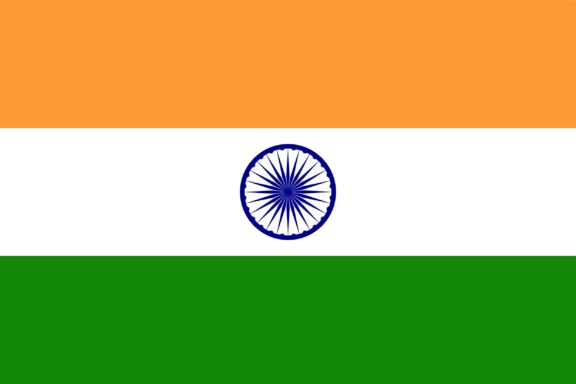
Suriname’s flag incorporates a star, as does the flag of India, reflecting their historical and cultural connections. Suriname has a significant Indian population, descendants of indentured laborers brought in the 19th and 20th centuries.
India’s flag also utilizes the wheel of law, or “Ashoka Chakra,” which represents ongoing progress, a theme echoed in the forward-looking symbolism of Suriname’s star.
Conclusion
In conclusion, Suriname’s flag is a multifaceted emblem deeply rooted in the nation’s past and present. Its unique design sets it apart in the global community, resonating with the collective values and goals of its people.
Image Sources and Copyright Information
- Suriname Flag Pin on Map: © hyotographics/Shutterstock